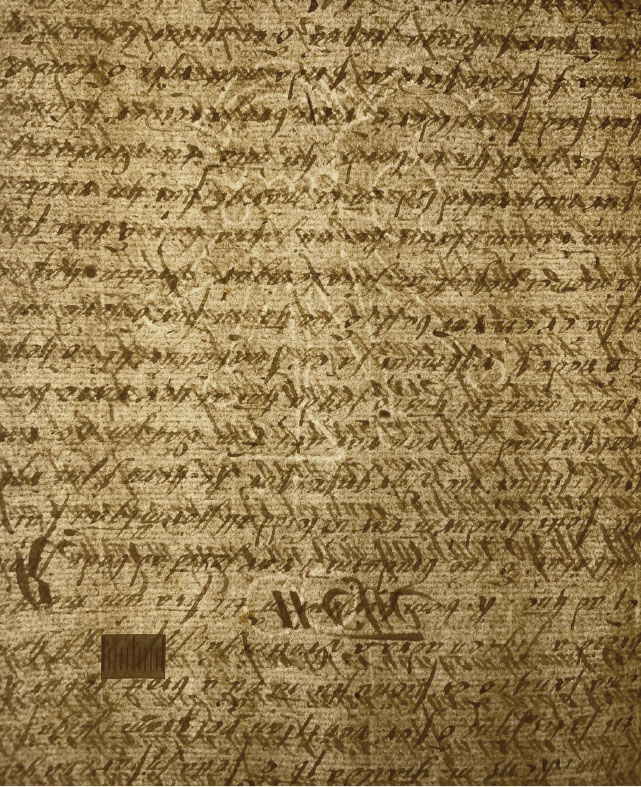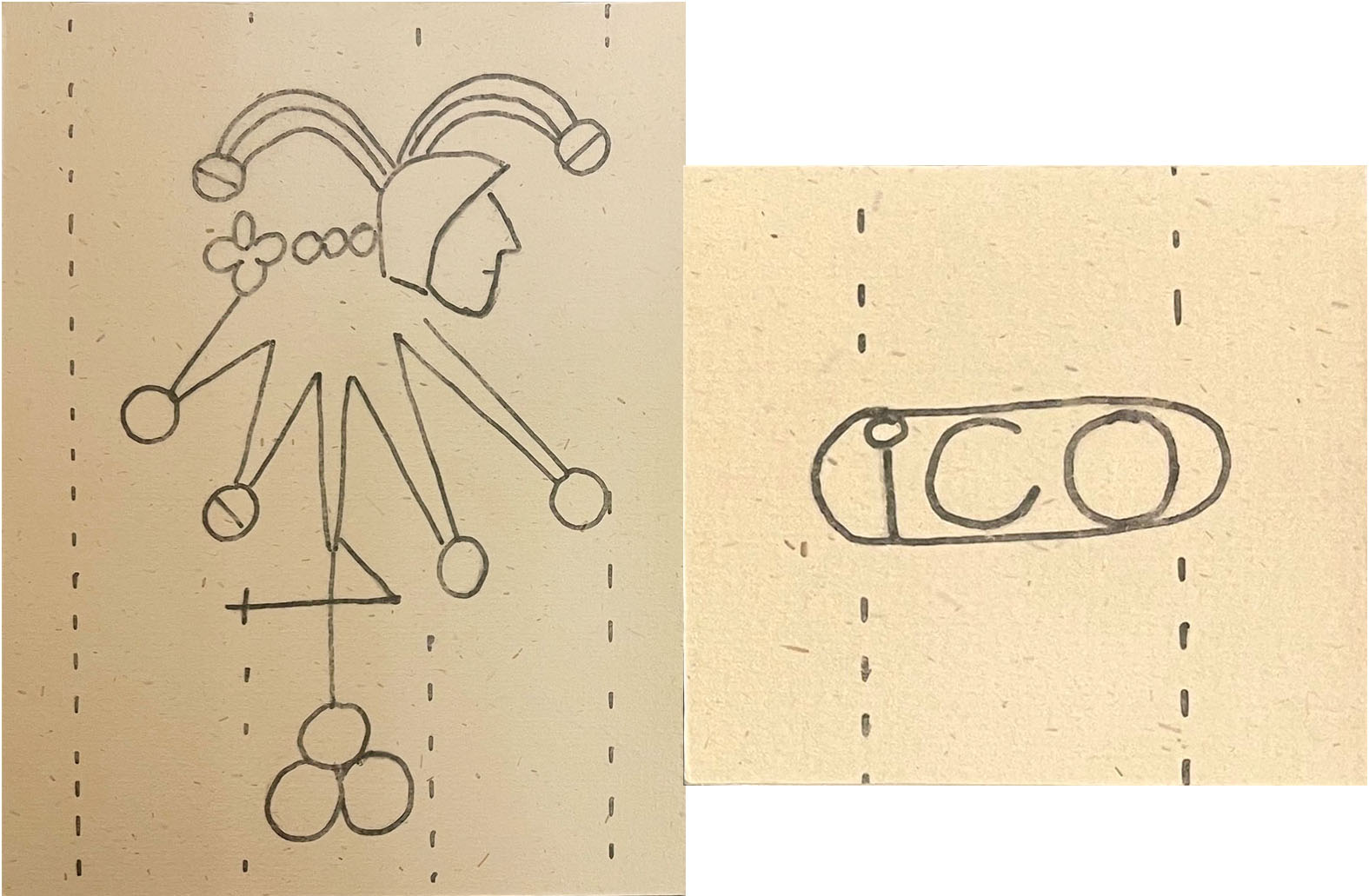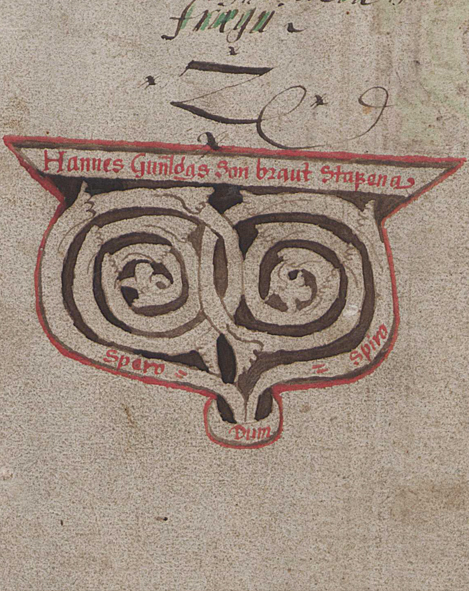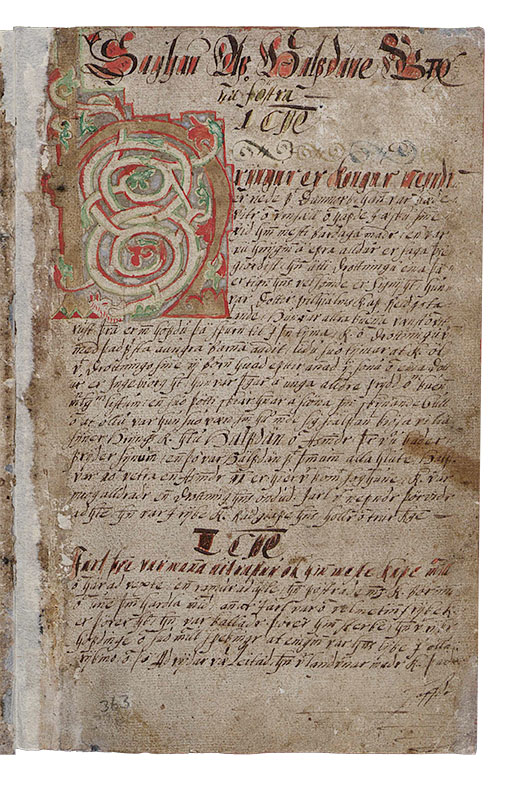Fool‘s cap and fractured letters, JS 27 fol.

The manuscript JS 27 fol. is a history book, written around 1670. It mainly contains prose romances and mythical-heroic sagas, or "A few informative ancient stories for permissible entertainment" as it says on the title page. The binding of the manuscript is most likely the original leather binding with wooden panels and clasps, and in the manuscript there are decorated initials, ornamental borders and book knots. Initials are in Romanesque style, with prominent floral shoots circling the letters drawn in ink and laid in four colours. Book knots either have a braid pattern or form a kind of loop work. The manuscript is mostly written in one hand, except for a few younger leaves that have been added later.
When the manuscript was catalogued at the beginning of the 20th century, it was believed to have been written by Hannes Gunnlaugsson (circa 1640–1686), a farmer and barber surgeon in Reykjarfjörður in the county of Norður-Ísafjörður. This conclusion was based on the fact that in an illumination on sheet 314r it says "Hannes Gunnlaugsson fractured the letters" and this was considered to mean that Hannes wrote the manuscript. Manuscript scholar Jónas Kristjánsson (1924–2014), however, argued that these words meant that Hannes had drawn and illuminated initials in the manuscript. Comparison with other manuscripts strengthens this hypothesis, but more manuscripts are preserved that Hannes either wrote or illuminated. Jónas thought it likely that the manuscript itself was written by Magnús Þórólfsson (circa 1620/1630–1667), who was one of the writers of Magnús Jónsson (1637–1702) "the stout" in Vigur.
The manuscript is currently on exhibition Paper Trails in The National and University Library. It discusses watermarks in 17th century paper manuscripts, but research on them can provide information about the origin and age of paper. Watermarks are rarely visible to the naked eye, but come to light when the paper is observed in transmitted light. In JS 27 fol., which has 381 leaves, there are two watermarks and one countermark. One of the watermarks shows a fool's cap with a bell collar. The countermark features the letters ICO, which are probably the initials of the paper maker I. Conard, who worked in Normandy, France from the middle of the 17th century. The paper must have arrived in Iceland soon after it was produced, where it was used by scribes in the Westfjords
The manuscript can be viewed here.
Sources:
Gaudriault, Raymond. Filigranes et autres caractéristiques des papiers fabriqués en France aux XVIIe et XVIIIe siècles. Paris, 1995.
Halldóra Kristinsdóttir, Jón Kristinn Einarsson and Rannver H. Hannesson. "Manuscript Production in 17th-Century Iceland. The Case of Hannes Gunnlaugsson." In Paper Stories. Paper and Book History in Early Modern Europe. Forthcoming 2023.
Jónas Kristjánsson. "Hannes Gunnlaugsson braut stafina." In Afmælisrit til dr. phil. Steingríms J. Þorsteinssonar 2. júlí 1971. Reykjavík, 1971. Pp. 88–96.
Páll Eggert Ólason. Skrá um handritasöfn Landsbókasafnsins. Vol. 2. Reykjavík, 1927.




Previous highlights of the month
The Finnish epic poem Kalevala bound by Unnur Stefánsdóttir
Previous highlights
See more"My sweetheart!" - The largest collection of love letters in the Women's History Archives
Previous highlights
See moreChat_
Please introduce yourself by adding name and email.
The chat is open 9:00 - 16:00 on weekdays.